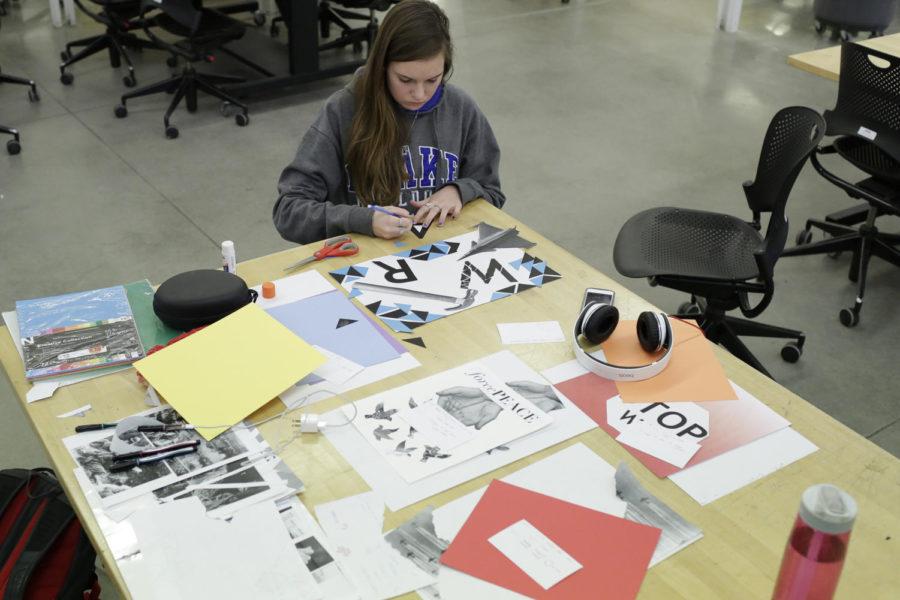Core Design Program takes toll on design students
Brian Achenbach/Iowa State Daily
Alison Knutson, freshman in design, works on her poster project which involves making a poster based off an article that she had read. “I like design. I can use my imagination, and it takes me away from life and reality. I’ve always wanted to be a graphic designer.” The article had to be about a social problem; she chose anti-war.
January 29, 2014
The students in the design program spend a countless number of hours each week perfecting their work in the Core Design Program with hopes of being accepted into the professional program the following year.
“It’s a love-hate relationship,” said Kaitlyn Brown, a junior in interior design. “The Core program prepared me for time management and general design.”
The undergraduate curriculum in the College of Design is divided into two phases. The first is a one-year pre-professional Core Design Program. Classes in the Core Design Program create a shared language, experience and community that exposes students to all disciplines within the College of Design.
“There are 11 1/2 credits that you have to take in the Core in order to apply to your program in May,” Brown said. “You have to make a portfolio over the course of two classes.”
Design 102 and Design 131 are classes that are both required studios in the Core Design Program. The work completed is later used in the student’s portfolio. In Design 102, students are given assignments to make a poster, a group passage way, paper tool, space container, section cuts of the space container and drawings.
“You get assigned a random tool, and then you have to make it out of paper,” Brown said. “I had to make a 3D model of sheers out of paper.”
Beyond the assignments, students in the Core commit their time to learning and make the studio their second home.
“You can always tell when there is an assignment due date coming up. It will be like 3 a.m. and the studio will be packed,” Brown said.
While students spend numerous hours in the studio before a due date, Brown said she spent well over 30 hours in the building each week while in the Core program. Some of the drawings that are assigned are still-life, so they must be completed inside the studio.
According to the college, the goal of the Core Design Program is to give students the opportunity to make more informed degree choices. Brown said that one of the hardest parts of the program was predicting what the professors were looking for.
“If you ask your professor for their opinion, they won’t give you it,” Brown said. “It is your design. They will tell you that you need to fix this somehow, but they will not tell you how to fix it.”
Completing the program results in students having the opportunity to apply to multiple programs at the end of their first year and to experiment with interdisciplinary work at the earliest stage of their college education.
Brown applied for the interior design program last May and was accepted. She still spends numerous hours in the studio each week, but she said that the Core program was more time-consuming and stressful than the professional program.
Once the Core Design Program is completed, a student may apply to enter the professional program. Applicants are reviewed on the basis of a portfolio, academic performance and a written essay. Students can apply for up to seven different professional programs once they complete the Core program.







